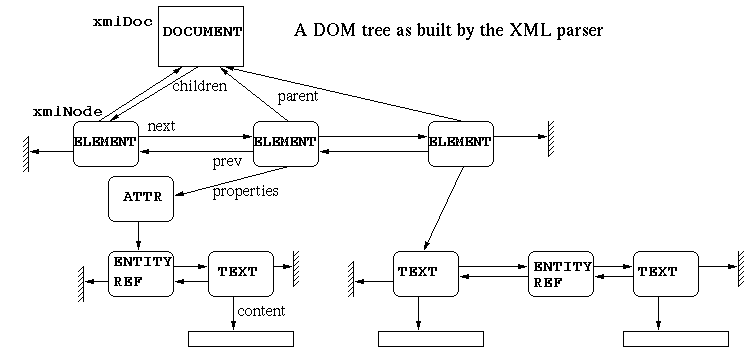The parser returns a tree built during the document analysis.
Thevaluereturned is an xmlDocPtr(i.e., a pointer
toanxmlDocstructure). This structure contains
informationsuchas the file name, the document type, and
achildrenpointerwhich is the root of the document (or
moreexactly the first child under theroot which is the document). The tree
ismade of xmlNodes,chained in double-linked lists of
siblingsand with a children<->parentrelationship. An xmlNode can also
carryproperties (a chain of xmlAttrstructures). An attribute may have a
valuewhich is a list of TEXT orENTITY_REF nodes. Here is an example (erroneous with respect to the XML spec
sincethereshould be only one ELEMENT under the root): 
In the source package there is a small program (not installed
bydefault)called xmllintwhich parses XML files given
asargument andprints them back as parsed. This is useful for detecting
errorsboth in XMLcode and in the XML parser itself. It has an
option--debugwhich prints the actual in-memory structure of
thedocument; here is theresult with the examplegivenbefore: DOCUMENT
version=1.0
standalone=true
ELEMENT EXAMPLE
ATTRIBUTE prop1
TEXT
content=gnome is great
ATTRIBUTE prop2
ENTITY_REF
TEXT
content= linux too
ELEMENT head
ELEMENT title
TEXT
content=Welcome to Gnome
ELEMENT chapter
ELEMENT title
TEXT
content=The Linux adventure
ELEMENT p
TEXT
content=bla bla bla ...
ELEMENT image
ATTRIBUTE href
TEXT
content=linus.gif
ELEMENT p
TEXT
content=...This should be useful for learning the internal representation model. Daniel Veillard | 






